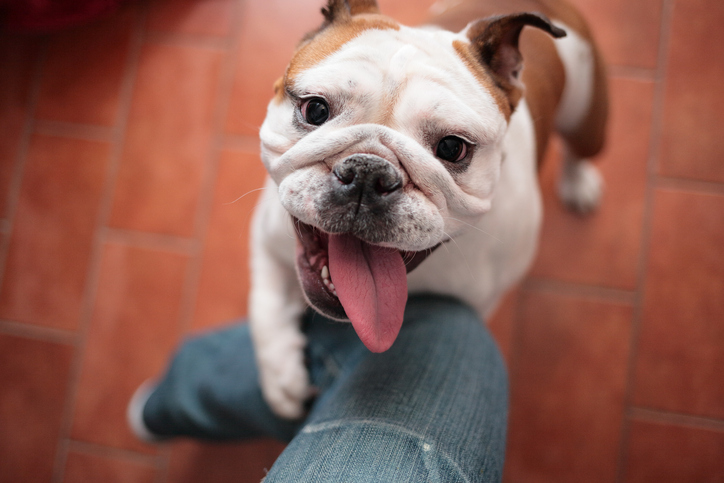There can be many reasons for dog shaking
Just like humans, pets have physical reactions to uncomfortable situations. You may have noticed that your dog is trembling or shaking from time to time. There can be many reasons for the shaking, from puppy excitement to old age tremors. While many of the causes of trembling are easily handled at home with a little extra attention from the owner, sometimes the shaking can indicate an illness or pain.
Paying attention to the behaviors that accompany the shaking will help you figure out the cause and the best way to handle it. If you notice your dog is shaking, look for clues about why. Maybe it is as simple as being chilled and needing a sweater or blanket. Of course, it could be a major illness or even a seizure causing the trembling. Being familiar with common causes of trembling or shaking will help you know when to contact the veterinarian for an appointment.
Before you call to schedule the appointment, make a list of things you have noticed in addition to the trembling. This might include whining, pacing, lethargy, drooling, barking, or hiding. Be giving your veterinarian as much detail as possible, you will make it easier for him to diagnose the cause of your pet’s shaking.
1) Cold
One commonly overlooked cause of shaking or shivering is low body temperature. This can be caused by illness or simply because of cold weather. Most dogs are able to tolerate cold temperatures for short periods of time, but shorthair dogs and those without a thick undercoat are more likely to be uncomfortable when it is cold outside.
Smaller dogs are also more susceptible to getting colder faster. Breeds such chihuahua, minpin, and bulldog might need a sweater or an extra blanket when temperatures fall. Of course, pets should not be kept outdoors in extremes of cold weather. Also, if your dog is wet from rain or snow, he will be more likely to be cold.
Another thing to consider is where your dog’s bed is located. While a garage is warmer than a doghouse in the backyard, it will still be quite cold in an unheated garage overnight. To help insulate your pet, lift their bed off of the concrete floor and put several pieces of cardboard underneath to form a draft barrier. Provide extra blankets so the dog can burrow and cover himself. The best place for your dog in extremely cold weather, is in the house with you.
2) Excitement
Another thing that can cause trembling or shaking is overstimulation or excitement. This is especially true with puppies and young dogs. If you have been away for several hours and arrive home, you might notice that your dog is so happy to see him shaking all over. Playing with other dogs can also cause overstimulation.

3) Stress or Worry
Dogs feel stress and worry about things just like humans do. Your pet might show signs of stress in a new situation or when taken to a new place. This often occurs when you take the dog to the vet, the groomer, or the boarding kennel. You can help by using a soft voice to reassure your dog. If possible, visit the location several times before it is necessary to leave the dog for a period. Just stop in to say hello if the owner allows it. If you are leaving your dog with a kennel, bring familiar toys and bedding. Provide something that has your scent to help the dog feel calm.
4) Fear
Fear causes an adrenaline rush in animals, just as it does in humans. Some dogs will run away, some will bark in a high-pitched tone, others will whine and hide. As a pet owner, you need to help your dog cope with his fear. Loud noises such as thunder or fireworks often cause fear in pets. The best way to calm your pet is by being there. Hold your dog and speak softly to him. Pet him and reassure him that everything is okay. Also try to minimize their exposure to whatever it is that is scaring them by closing the blinds, turning on a radio/TV or creating a “safe place” in a bathroom or closet where they can get away from the noise. Some dogs benefit from wearing a special garment called a thundershirt. Others need anti-anxiety medication to deal with their fear.

5) Illness
Another, less common cause of shaking is pain or illness. This can be caused by a simple stomachache from eating something he shouldn’t have or something more serious like an injury or sickness. Other things that you might observe if your dog is feeling bad include pacing, whining, drooling, shifting positions frequently to get comfortable, or excessive panting.
If you suspect an illness is causing your dog’s trembling, pay careful attention to the accompanying behaviors so you can tell the vet. Also, refrain from giving your dog medication without speaking to the veterinarian. While some over-the-counter medications are okay for dogs, others can be fatal.
6) Old Age Tremors
As uncomfortable as it is to think about, old age in dogs causes many physical and mental changes. As the muscles and nerves deteriorate, tremors can develop, just as in humans. This can lead to problems like weakness, urinary incontinence, and decreased activity. If you notice your dog trembling, and stumbling, or interacting with you less it can be a sign of age related problems.
When to Seek Help
You want the best for your pet, but you don’t want to be overly alarmed for no reason. If your dog is shaking or trembling, the best course of action is to observe first and call the vet second. Notice where your pet is when the shaking occurs, what surroundings or other animals are near, and if there is something that might be frightening him. Try to calm him with a low, quiet voice and a gentle touch.
